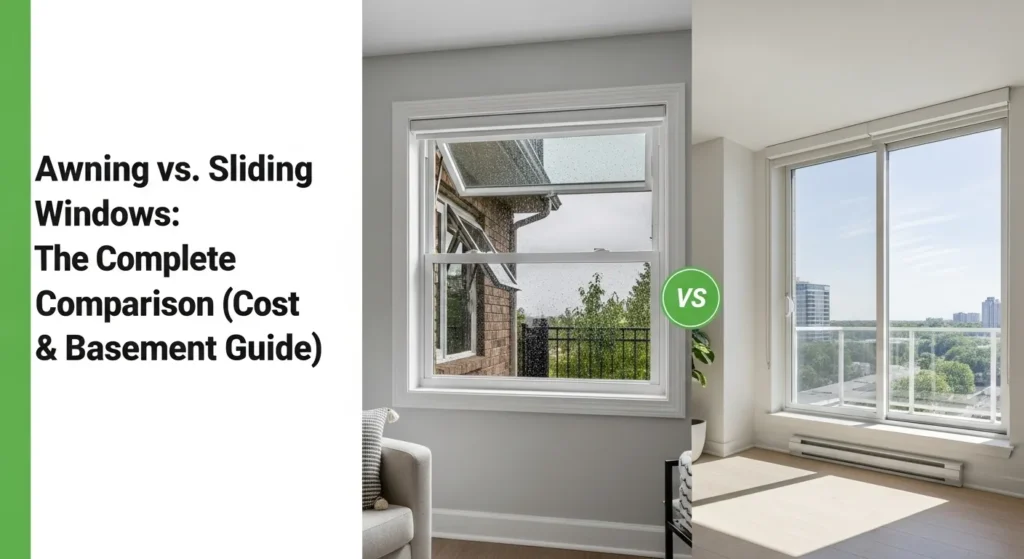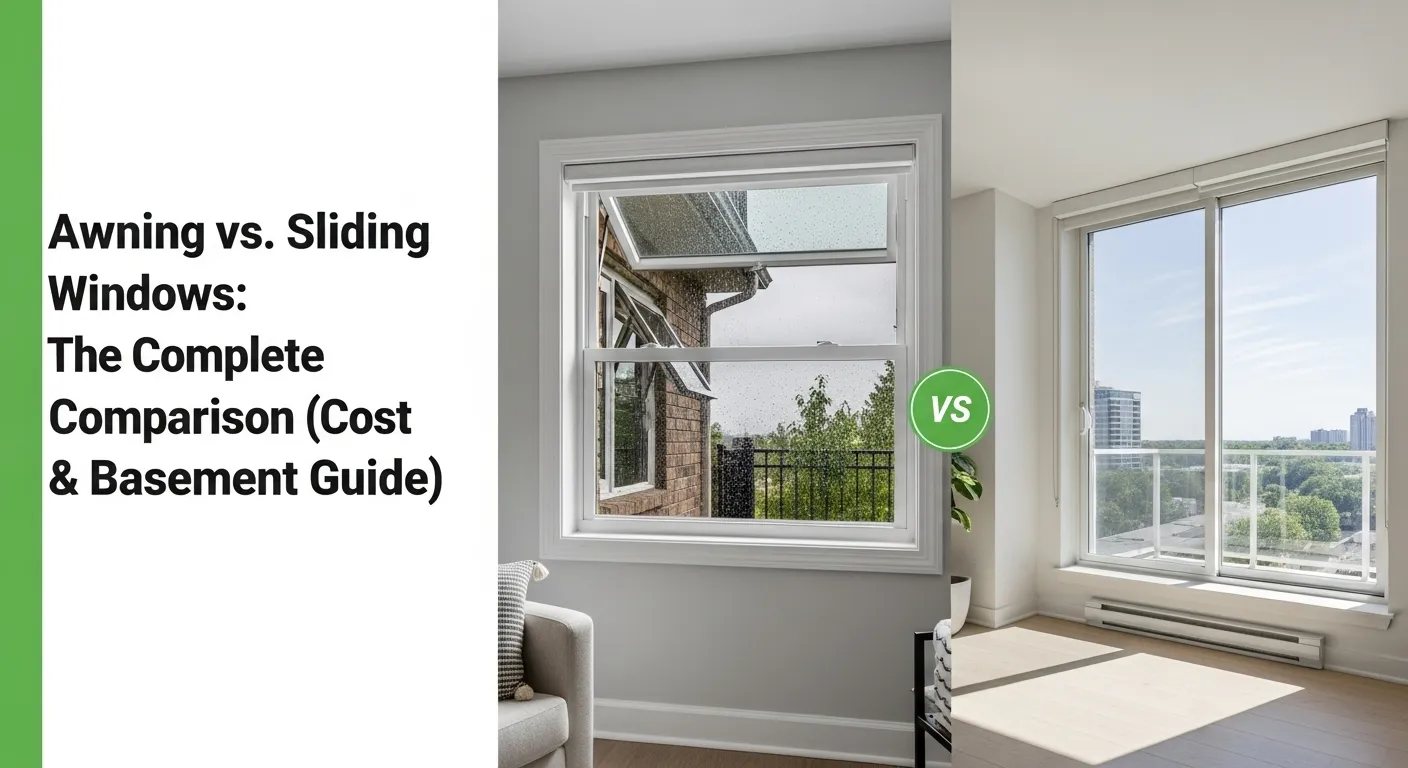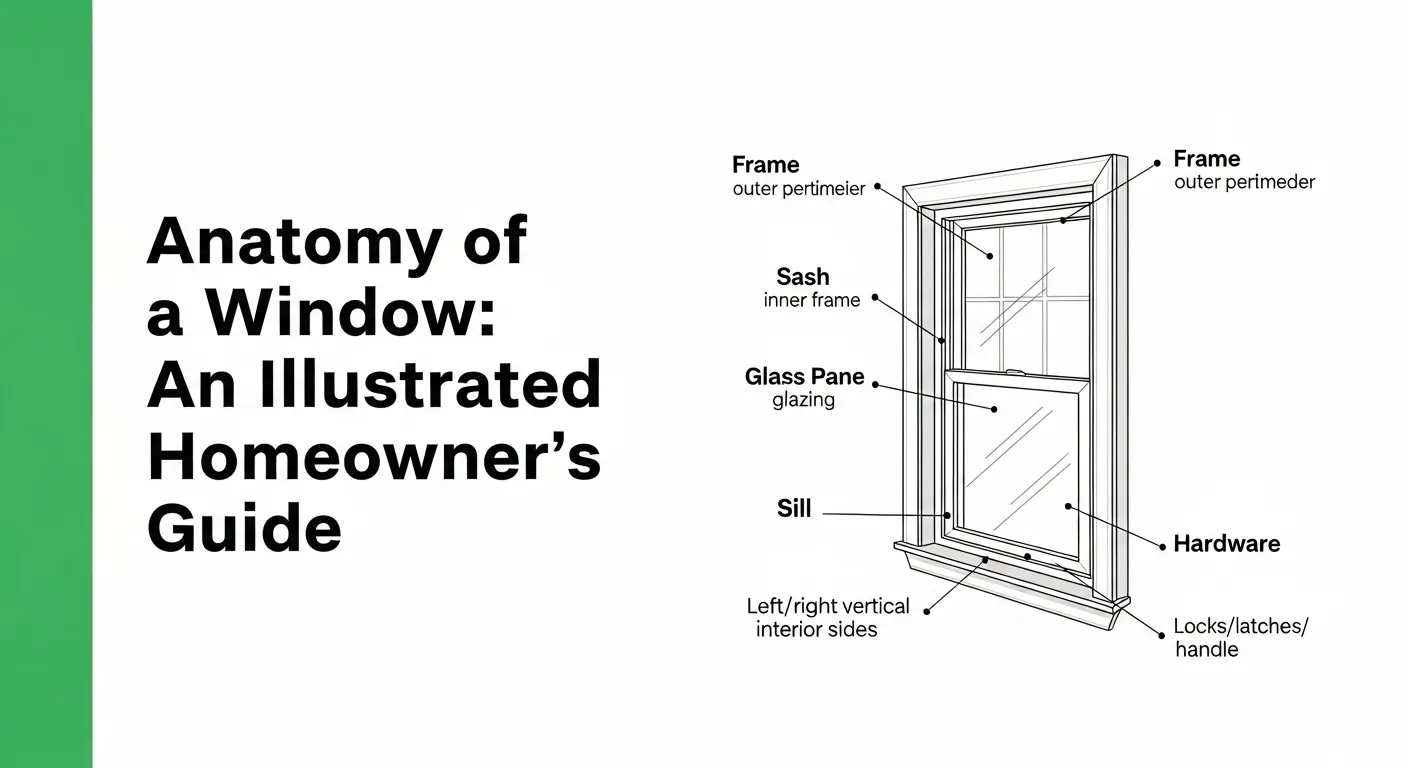Can the seal be repaired? No. A failed seal in a double‑pane window (IGU) cannot be effectively repaired. The insulating gas has escaped, and moisture intrusion has permanently compromised performance.
What about “defogging”? It’s a cosmetic, temporary clarity fix. It does not restore energy efficiency or the original U‑factor.
What’s the correct solution?Replace the insulated glass unit (IGU) if the frame is sound. Consider sash or full window replacement if frames are worn or multiple units have failed.
What Is a “Window Seal,” and Why Does It Matter?
The “seal” is the hermetic edge seal that bonds two panes of glass to a spacer, creating an airtight insulated glass unit (IGU) often filled with argon or krypton gas. This sealed space cuts heat transfer and reduces condensation and noise.
- An IGU is made of:
- Two panes of glass
- A spacer system (with desiccant)
- A primary and secondary sealant creating an airtight barrier
- Optional low‑E coatings and gas fill for improved thermal performance
- Why it matters: If the edge seal fails, gas escapes and moist air enters, leading to fogging, streaking, and a steep drop in insulation.
Thermal note: The low thermal conductivity of argon, approximately k≈0.016 W m⁻¹ K⁻¹, significantly improves insulation compared to regular air, thereby reducing conductive heat loss across the glass gap.

The Alarming Impact of a Failed Seal on Your Energy Bills
When the seal fails, gas is lost and moist air replaces it, which can increase the window’s U‑Factor dramatically—often approaching single‑pane performance—and may raise room heating/cooling costs by roughly 10–20% depending on climate and exposure.
- What changes:
- The gap’s insulating gas is gone → higher conductive and convective heat transfer.
- Persistent interior fogging or streaks reduce solar gain control and comfort.
- HVAC runs longer to maintain setpoints near leaky windows.
The Verdict on “Repairs”: Defogging vs. Reality
Defogging can clear visibility for a time, but it’s not a structural or thermal repair. It doesn’t restore the original sealed environment or gas fill.

How Do Window Defogging Services Work?
A technician typically drills a small hole, injects cleaning/defogging agents, evacuates moisture, and installs a one‑way micro‑vent.
- Steps at a glance:
- Drill micro‑holes through one pane or spacer edge
- Rinse/dry the cavity
- Insert vent to let future moisture escape
Why Is Defogging Not a True Repair?
The original hermetic seal and gas fill are not restored, so thermal performance remains degraded.
- Key limitations:
- No gas fill restored → efficiency loss remains
- U‑Factor not recovered → comfort and energy penalties persist
- New failure points → vents/holes can admit contaminants over time
- Cosmetic only → clarity may return temporarily, but not insulation
Precision windows for every project—unlock lasting quality and seamless delivery.
Start Your Quote NowWhat Are the Real Solutions for a Foggy Vinyl Window?
Choose the scope that matches the frame’s condition and your goals: IGU replacement, sash replacement, or full window replacement.
Solution 1: Insulated Glass Unit (IGU) Replacement
Please retain the existing frame and replace only the failed IGU. This restores clarity and thermal performance with minimal disruption.
- Best for: Sound vinyl frames with isolated seal failures
- Pros: Least invasive, preserves exterior/interior finishes, restores efficiency
- Consider: Professional measurement/ordering is crucial for fit and seal integrity

Solution 2: Window Sash Replacement
Replace the entire operable sash that holds the IGU while keeping the main frame.
- Best for: Slightly worn, hard‑to‑service sashes while the main frame is still good
- Pros: New sash hardware and weatherstripping; easier than full replacement
- Consider: Availability must match your window brand/model
Solution 3: Full Window Replacement
Remove and replace the entire unit (frame + sash + IGU) for a fresh start and highest efficiency.
- Best for: Older windows, damaged frames, multiple failures, or major upgrades
- Pros: New frame, warranty, and opportunity for better low‑E options and air sealing
- Consider: Highest cost and more installation disruption
Cost Comparison: Defogging vs. IGU vs. Full Replacement
Defogging is the least expensive option but only improves appearance; replacing the insulated glass unit (IGU) enhances performance at a moderate cost, while full replacement is the most expensive option but provides the greatest improvement.
| Solution | Estimated Cost (per standard window) | Pros | Cons |
|---|---|---|---|
| Window Defogging | $75–$150 | Cheapest quick clarity | Cosmetic only; doesn’t restore efficiency; may re‑fog |
| IGU Replacement | $150–$400 | Restores efficiency and clarity; minimal disruption | Requires pro measurement/installation |
| Full Window Replacement | $500–$1,200+ | New frame, full warranty, top efficiency | Most expensive; more disruptive install |
Making the Right Choice: What Factors Should You Weigh?
Please consider the frame condition, budget, and the number of units that have failed when making your decision.

Window Age & Condition
If the frame is 15–20+ years old, chalky, warped, or drafty, full replacement is often the smarter long‑term investment.
Budget
IGU replacement typically offers the best cost‑to‑performance restoration for otherwise healthy windows.
Number of Failed Windows
Multiple failures may indicate age or systemic issues; bundling a full replacement can yield better pricing and consistent results.
How Do Warranties Handle Seal Failure?
Many manufacturer warranties cover seal failure for 10–20 years, but labor is often excluded after 1–2 years and coverage may be prorated.
- What to do:
- Locate original paperwork or window labels (brand/model)
- Contact the manufacturer with serial/label info
- Ask about coverage terms for parts vs. labor and transferability
Can You Replace an IGU Yourself? A Word of Caution
Possible for expert DIYers, but generally not recommended due to safety, sizing, and sealing risks.
- Risks:
- Ordering wrong size/thickness/offset
- Breaking glass during removal/installation
- Poor edge sealing → leaks, fogging, voided warranties
- Handling tempered or low‑E coated glass incorrectly
- Conclusion: For safety, fit, and performance, hire a professional glazier.
- Replace just the glass: How to Replace the Glass in a Vinyl Window
- Fix operation issues: How to Fix a Stuck or Hard‑to‑Open Vinyl Window
- Balance problems: How to Fix a Vinyl Window That Won’t Stay Up
- Install fundamentals: How to Properly Shim, Seal, and Insulate a New Vinyl Window
- No flange scenario: How to Install a Vinyl Window Without a Nailing Flange
- Screens: How to Remove and Replace a Vinyl Window Screen
- Trim add‑ons: How to Install Shutters on a House with Vinyl Siding
- Screens: How to Install Blinds or Shades on Vinyl Windows
Conclusion
A failed double‑pane seal cannot be repaired in a way that restores efficiency—defogging is cosmetic only. The practical solution is glass replacement.
For most sound vinyl frames, IGU replacement delivers clear glass and original performance at a reasonable cost. Consider sash or full replacements for older, damaged, or multiple failing units.










